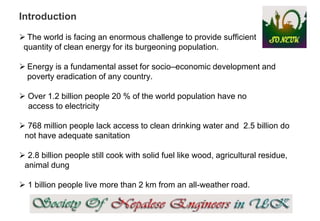Energy crisis is a major problem that Nepal has been facing for many years. It is a crisis that affects the country's economic growth, development, and standard of living. Nepal is heavily reliant on hydroelectricity as its main source of energy. However, the country has been experiencing a severe energy crisis due to various factors such as insufficient infrastructure, lack of maintenance, and inadequate investment in the energy sector.
One of the main causes of the energy crisis in Nepal is the lack of infrastructure. Nepal has a huge potential for hydroelectricity generation. However, the country lacks the necessary infrastructure to harness this potential. Many of the hydroelectric power plants in Nepal are outdated and have not been properly maintained. As a result, they are unable to generate electricity to meet the increasing demand.
Another cause of the energy crisis in Nepal is the lack of maintenance. Many of the hydroelectric power plants in Nepal are not well-maintained due to a lack of investment. This leads to frequent breakdowns and a decrease in their efficiency. Moreover, the transmission lines in Nepal are also not well-maintained, leading to losses in electricity during transmission.
The energy crisis in Nepal is also a result of inadequate investment in the energy sector. The government of Nepal has not invested enough in the energy sector, which has led to a lack of development in the sector. As a result, the country is unable to meet the increasing demand for electricity.
To solve the energy crisis in Nepal, the government needs to take several measures. One of the solutions is to invest in the development of the country's hydroelectricity potential. The government should invest in the construction of new hydroelectric power plants and the modernization of existing ones. This will increase the country's electricity generation capacity and help to meet the increasing demand.
The government should also invest in the maintenance of hydroelectric power plants and transmission lines. This will help to increase the efficiency and reliability of these systems, leading to a reduction in the energy crisis.
Furthermore, the government should encourage the use of renewable energy sources such as solar and wind power. This will help to reduce the country's reliance on hydroelectricity and decrease the impact of the energy crisis.
In conclusion, the energy crisis in Nepal is a major problem that affects the country's economic growth and development. To solve this crisis, the government needs to invest in the development and maintenance of hydroelectric power plants, as well as encourage the use of renewable energy sources. With the right measures, Nepal can overcome the energy crisis and achieve a sustainable and reliable energy supply.









